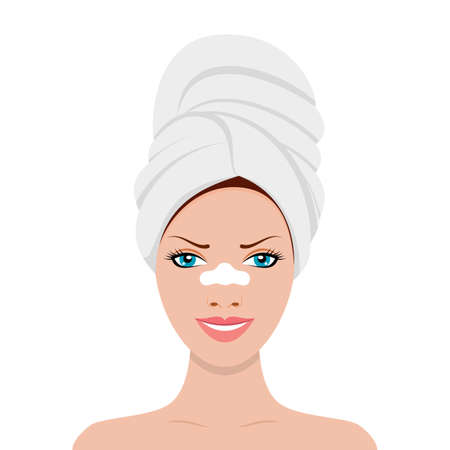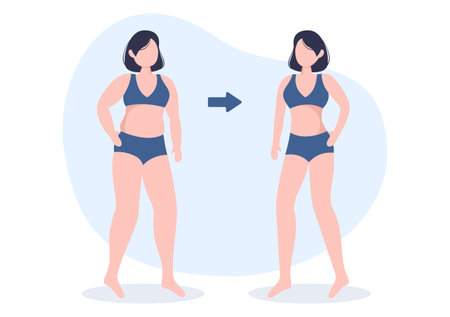Understanding Cheek Fillers: The Basics
Cheek fillers have become a buzzword in American beauty circles, with more people than ever seeking subtle yet transformative ways to enhance their facial features. But what exactly are cheek fillers, and why are they so popular? At their core, cheek fillers are injectable treatments—most often made from hyaluronic acid or similar substances—that add volume and contour to the mid-face area. This quick, minimally invasive procedure is designed to restore youthful fullness, improve facial symmetry, and give the cheeks a natural-looking lift. In the U.S., the appeal of cheek fillers lies in their ability to deliver noticeable results without surgery or significant downtime. For many Americans navigating the fast-paced demands of work and social life, this “lunchtime lift” offers an attractive alternative to more invasive cosmetic procedures. By understanding how cheek fillers work and why theyve captured mainstream attention, newcomers can better appreciate the before-and-after transformations that continue to fuel this trend nationwide.
2. The Before: Common Concerns Leading to Cheek Fillers
When it comes to facial aesthetics, Americans are increasingly turning to cheek fillers as a solution for a range of concerns. Before embarking on the journey, individuals often grapple with self-perceived imperfections and aesthetic insecurities, many of which are amplified by social media trends and celebrity culture. For many, the decision to seek cheek fillers is rooted in a desire to enhance confidence and achieve a refreshed appearance that aligns with personal and societal standards.
Motivations for Considering Cheek Fillers
The motivations behind seeking cheek fillers are multifaceted. Aging is a significant factor, as natural volume loss in the midface can lead to sunken cheeks and a tired look. Others may be influenced by genetics or simply wish to enhance their facial symmetry. Additionally, the rise of video calls and selfies has made people more aware of their facial contours than ever before. Below is an overview of common motivations:
| Motivation | Description |
|---|---|
| Volume Loss Due to Aging | Desire to restore youthful fullness lost over time |
| Lack of Facial Definition | Seeking enhanced cheekbone structure for better symmetry |
| Genetic Flatness | Addressing naturally flat or undefined cheeks |
| Selfie & Social Media Influence | Aiming for camera-ready looks inspired by online trends |
| Professional Image Concerns | Wanting a refreshed look for career advancement or public presence |
Insecurities and Emotional Drivers
Beneath these motivations lie deeper emotional drivers. For some, visible signs of aging can erode self-esteem, while others may feel pressure to conform to the high standards set by influencers and celebrities. The promise of non-surgical cheek augmentation offers a relatively quick and minimally invasive way to address these insecurities without committing to permanent changes.
Desired Outcomes: What Do Patients Hope For?
Ultimately, Americans considering cheek fillers hope for results that look natural yet noticeable. They want rejuvenation without looking “overdone,” aiming for subtle enhancements that highlight their unique features. Commonly desired outcomes include:
- Smoother facial contours and improved definition around the cheekbones
- A youthful lift that counteracts sagging or hollowing from age or weight loss
- An overall boost in confidence and satisfaction with one’s appearance
This blend of aesthetic motivation, emotional reassurance, and practical expectations sets the stage for the real-life transformations explored in later sections.

3. The Transformation Process: What to Expect During Treatment
Getting cheek fillers is a straightforward journey, but understanding each step can help you feel more confident and prepared. Here’s a detailed look at what to expect from your first consultation all the way through your immediate post-procedure care.
Step 1: The Initial Consultation
Your transformation begins with an in-depth consultation with a board-certified injector or dermatologist. During this session, you’ll discuss your aesthetic goals, medical history, and any concerns you may have. The practitioner will assess your facial structure and recommend the right filler type and volume for natural-looking results. You’ll also learn about the procedure, potential risks, and expected outcomes.
Step 2: Pre-Treatment Preparation
Before your appointment, you’ll receive guidelines such as avoiding blood-thinning medications, alcohol, and certain supplements that might increase bruising. Arriving makeup-free allows your provider to properly cleanse and prep your skin for treatment.
Step 3: The Cheek Filler Procedure
The actual procedure typically takes less than 30 minutes. Your provider will apply a numbing cream or use fillers pre-mixed with lidocaine to minimize discomfort. Using a fine needle or cannula, they’ll carefully inject the filler into targeted areas of your cheeks. Throughout the process, your provider may massage the area to ensure smooth, even distribution and optimal contouring.
What It Feels Like
Most patients report only mild pressure or pinching during injections—any discomfort is usually brief. You can communicate openly with your provider if you need breaks or have concerns during the process.
Step 4: Immediate Post-Procedure Care
After the injections, you might experience minor swelling, redness, or tenderness—these effects are normal and usually subside within a few days. Your provider will offer aftercare instructions such as avoiding strenuous exercise, alcohol, and excessive heat (like saunas) for 24-48 hours. Cold packs can help minimize swelling. You’ll likely see immediate improvement in cheek volume and contour, with full results visible once any swelling resolves.
When to Contact Your Provider
If you notice unusual pain, persistent swelling, or any signs of allergic reaction after your treatment, don’t hesitate to reach out to your practitioner promptly.
4. After the Fillers: Real Results and Patient Experiences
When it comes to cosmetic treatments, nothing speaks louder than real-life transformations and honest testimonials. Cheek fillers have become increasingly popular across the U.S., with patients from all walks of life sharing their stories and results. Let’s take a closer look at how Americans are experiencing cheek filler enhancements, both visually and emotionally.
Showcasing Real Before-and-After Transformations
Across major cities like Los Angeles, New York, and Chicago, clinics report a surge in patients seeking subtle yet impactful changes. Many are motivated by the desire for restored volume, youthful contours, or simply a confidence boost. The following table highlights some typical experiences:
| Patient Name | Age | Location | Before | After | Testimonial Highlight |
|---|---|---|---|---|---|
| Ashley M. | 32 | Los Angeles, CA | Flat cheekbones, tired appearance | Youthful lift, radiant look | “I feel refreshed and more confident at work!” |
| James R. | 45 | Chicago, IL | Sagging midface, visible lines | Smoother skin, natural contouring | “Friends say I look well-rested—no one suspects fillers.” |
| Sophia G. | 28 | Austin, TX | Lack of definition, uneven cheeks | Balanced features, enhanced symmetry | “It’s subtle but makes such a difference in photos.” |
| Megan S. | 54 | New York, NY | Volume loss due to aging | Younger appearance, restored fullness | “My face feels like it did ten years ago!” |
The Emotional Impact: More Than Just Aesthetic Changes
For many Americans who have undergone cheek filler procedures, the transformation isn’t just about looking better—it’s about feeling better too. Patients often describe a newfound self-assurance that permeates both their personal and professional lives. From teachers to business executives and creative professionals, cheek fillers have helped people present their best selves every day.
Common Themes in Patient Testimonials:
- Naturally Enhanced Appearance: Most recipients appreciate that modern techniques focus on subtlety rather than drastic change.
- Quick Recovery: Minimal downtime means people can return to daily life almost immediately.
- No “Overdone” Look: Americans value results that enhance without drawing unwanted attention or speculation.
- Mental Wellness: Improved self-image often translates into improved mental health and social interactions.
User-Shared Advice:
- “Choose an experienced provider who understands your goals.”
- “Review before-and-after portfolios during your consultation.”
- “Don’t be afraid to ask questions about products and longevity.”
- “Be patient—the best results appear after initial swelling subsides.”
The stories and feedback from real patients highlight why cheek fillers continue to rise in popularity across America: they deliver tangible improvements while supporting confidence and individuality.
5. Adjusting to the New Look: Emotional and Social Impact
For many Americans, cheek fillers are about more than just physical appearance—they serve as a catalyst for emotional transformation and social reinvention. After receiving cheek fillers, individuals often report a notable boost in self-confidence. This newfound assurance can be seen in everything from how they present themselves in professional meetings to their comfort level at social gatherings. In a culture that values individuality and personal branding, enhanced cheek volume frequently translates to increased positivity about one’s self-image.
In professional settings, subtle facial enhancements like cheek fillers can affect first impressions and ongoing interactions. American workplaces, especially in client-facing industries, often place an emphasis on polished appearances. People who have undergone these procedures report feeling more poised during interviews and presentations, attributing this change to both their improved look and the psychological lift it provides.
The Social Ripple Effect
Socially, the impact is equally significant. Whether attending family reunions or networking events, those with enhanced cheeks often feel less self-conscious and more willing to engage. Testimonials highlight how friends and acquaintances notice a difference—not always identifying the specific change, but commenting on a “refreshed” or “rested” appearance. This positive feedback loop can reinforce feelings of acceptance and belonging within diverse American communities.
Navigating Reactions
Of course, reactions are not universally positive. Some individuals experience anxiety over perceived judgment or questions from peers who may be critical of cosmetic procedures. However, with increasing acceptance of aesthetic treatments across the U.S., open conversations about enhancements are becoming more normalized. Many find that being transparent about their choice fosters understanding and even inspires others considering similar changes.
Emotional Growth Beyond Appearance
Ultimately, adjusting to a new look after cheek fillers is as much an emotional journey as it is a physical transformation. The process challenges people to reconcile external changes with their internal identity—a task that can lead to greater self-acceptance and empowerment in both personal and public spheres.
6. Expert Insights: What U.S. Aestheticians Want You to Know
When considering cheek fillers, advice from American cosmetic professionals can make all the difference in your transformation journey. According to U.S. aestheticians, achieving natural-looking results starts with choosing a qualified injector who understands facial anatomy and the nuances of different filler products.
Focus on Subtle Enhancement
Experts stress that less is often more when it comes to cheek augmentation. “Our goal is always to enhance, not to alter,” says Dr. Melissa Greene, a board-certified dermatologist in Los Angeles. She recommends starting conservatively and building up gradually if needed, ensuring clients still look like themselves—just refreshed and lifted.
Safety First: Choosing the Right Provider
Safety remains the top priority for U.S. providers. Always seek treatment from licensed medical professionals who use FDA-approved fillers. Dr. Greene advises, “Avoid bargain deals or non-medical settings—your health and appearance are worth investing in.” Reputable clinics perform comprehensive consultations and will discuss your medical history to minimize risks.
Longevity and Maintenance Tips
Aestheticians emphasize realistic expectations about how long results last—typically 12-18 months for most hyaluronic acid fillers. “Maintenance appointments are key,” notes New York aesthetic nurse Jennifer Lee. She also suggests following post-procedure care instructions closely to optimize outcomes and reduce swelling.
Empowering Your Decision
Ultimately, U.S. experts want patients to feel informed and empowered. Ask questions about filler types, expected results, side effects, and aftercare before committing. With skilled hands and open communication, cheek fillers can deliver subtle yet stunning transformations that boost both confidence and natural beauty.


